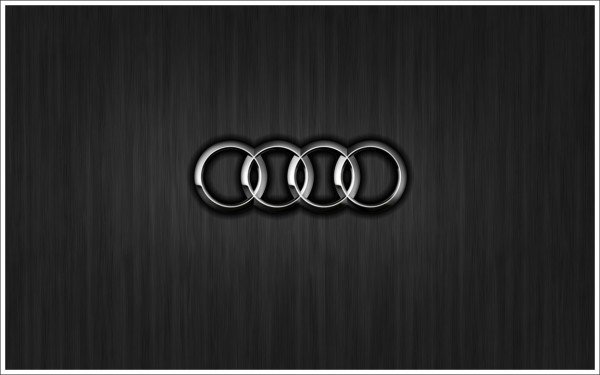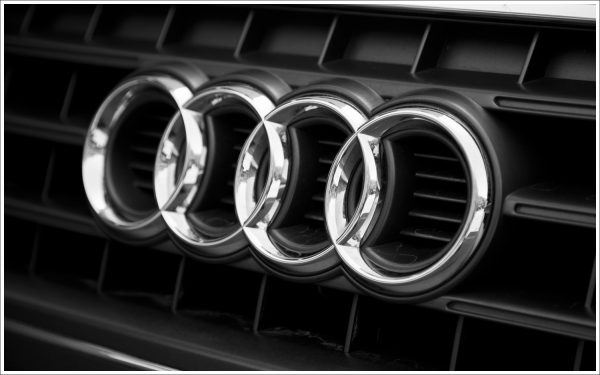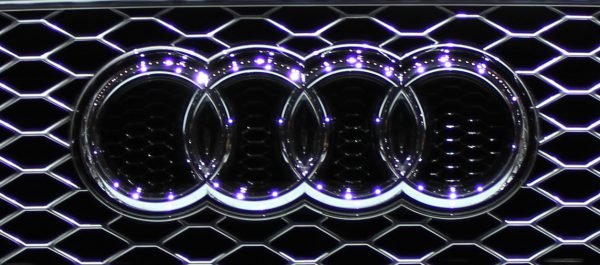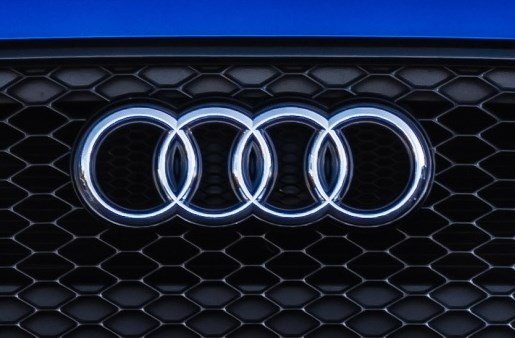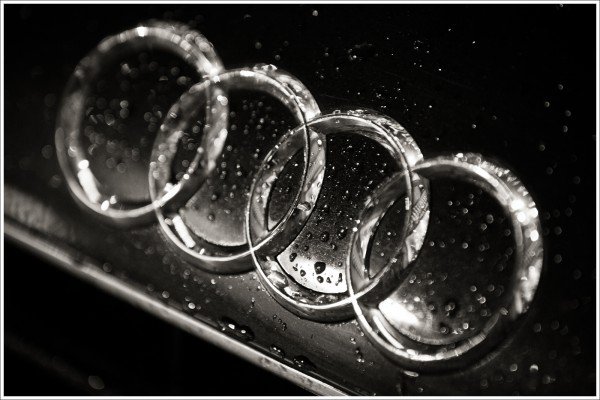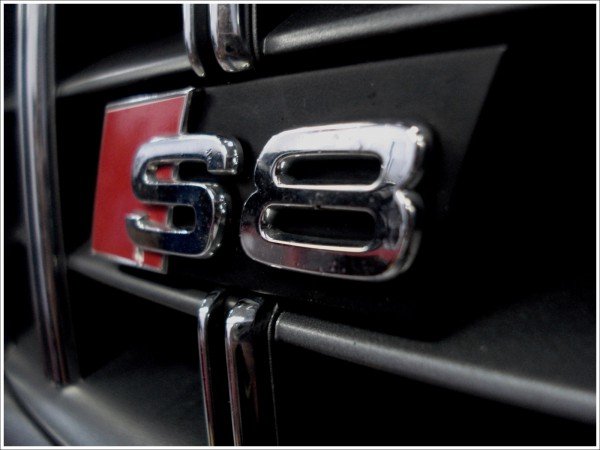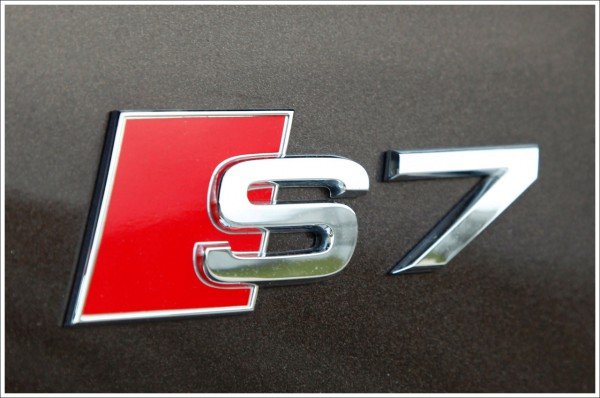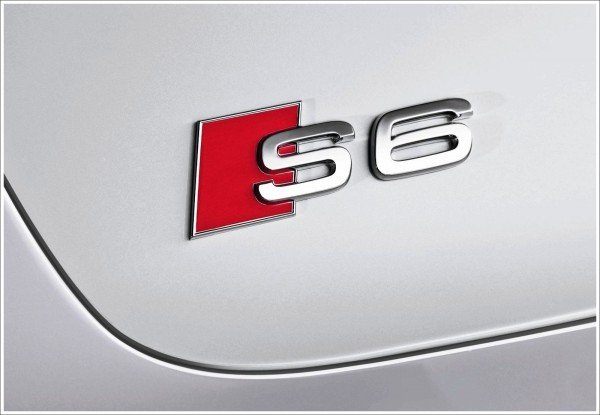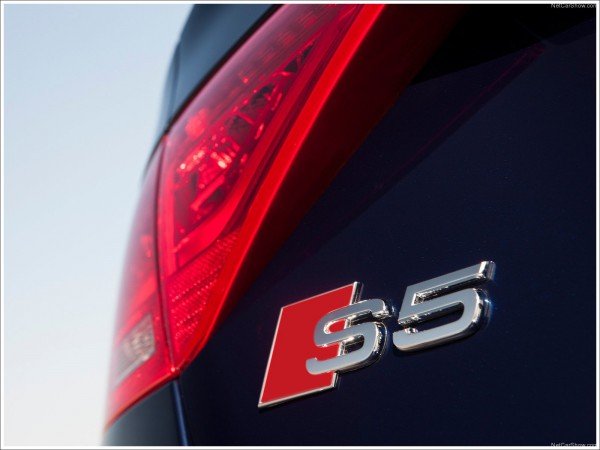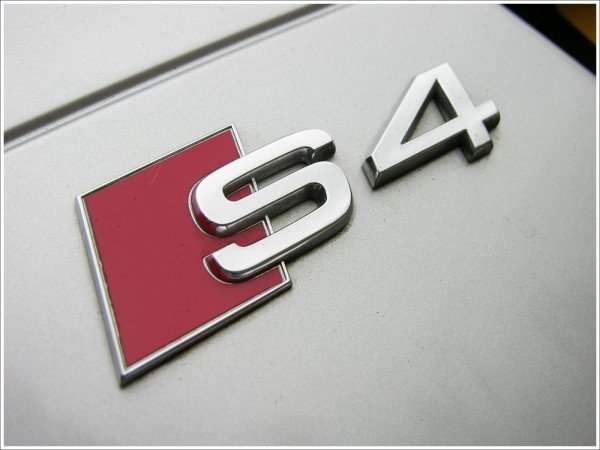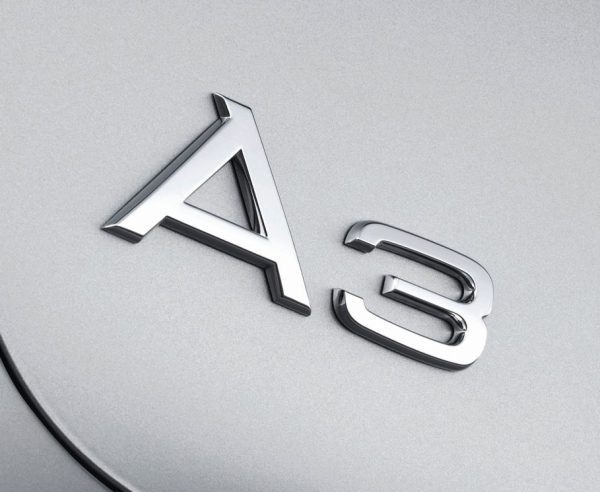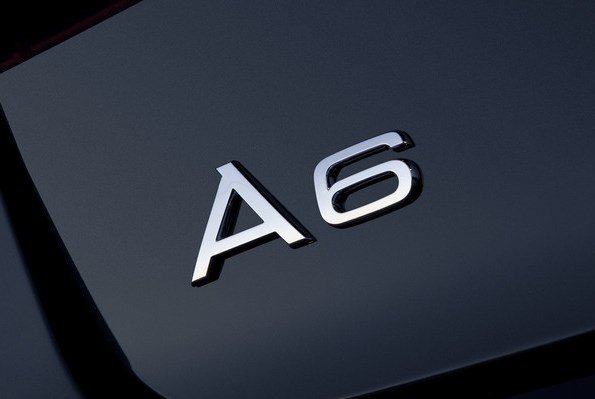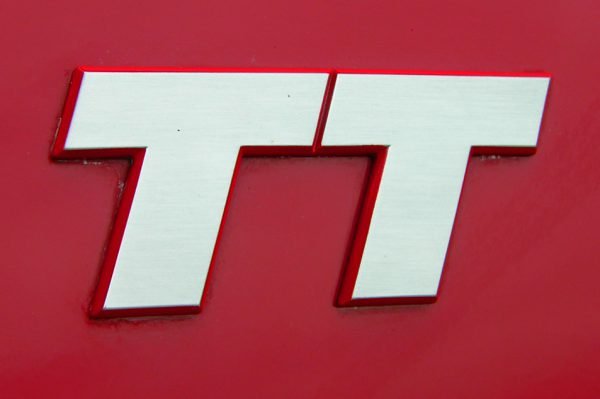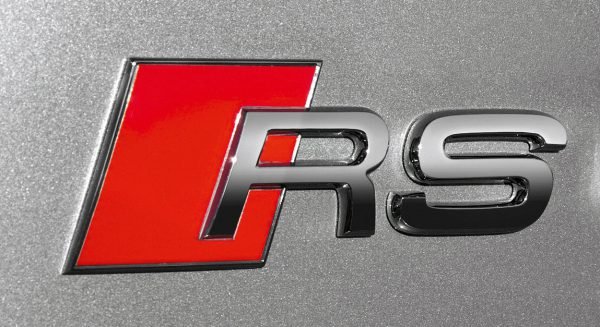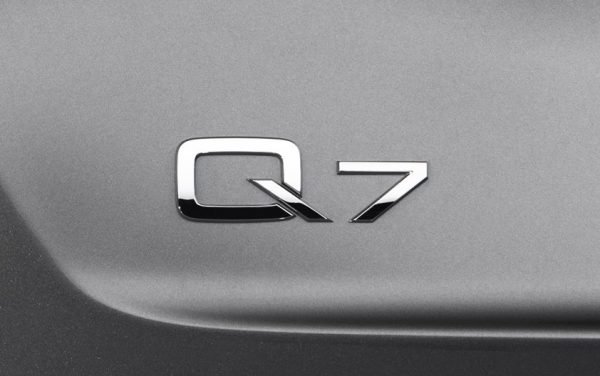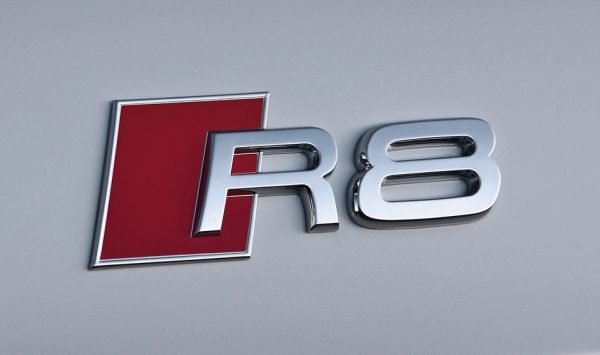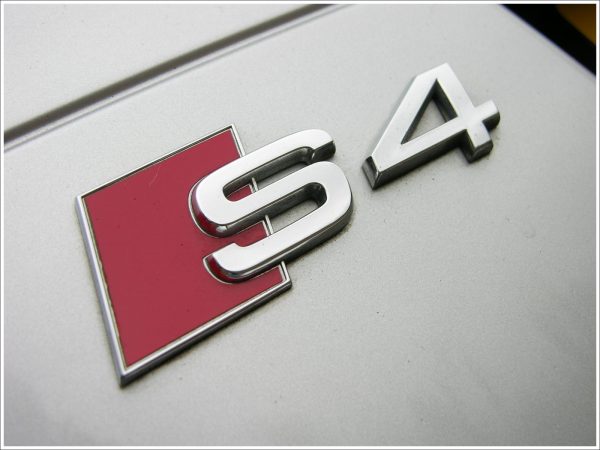| Founded | July 16, 1909 |
| Founder | August Horch |
| Headquarters | Ingolstadt, Germany |
| Owner | Volkswagen |
| Slogan | “Vorsprung durch Technik” |
| Subsidiaries | Lamborghini Audi Sport GmbH |
| Official Site | www.audi.com |
| Official Facebook Page | www.facebook.com/audi |
Audi is the mane of one of the most famous German automating companies, which was established in 1909 and is a part of the Volkswagen Group. Known mainly as a producer of luxury vehicles, Audi keeps expanding its automobile lineup, adding new models.
Meaning and History
Logo history is enveloping four rings of Audi as other images of known car makes. The name of Audi has a complex destiny. It bears the patronymic of its establisher August Horch.
One day, during the conversation of Horch with his close associate Franz Fikentsherom, the older son of the latter one offered the name Audi, having said his landmark words: “Dad, audiatur et altera Pars (listen on the other way around) …is there any possibility to give the name “Audi” in place of “horch” to the company?” “Horch!” means “listen” in translation from German and in Latin, it will be “Audi”. This idea took instantly everyone fancy.
However, if one so wanted to call a company by his name, why could not just call it Horch? Specifically, August Horch – named in this way his first car company in the distant 1899. It was called Horch & Cie. But 10 years after that it fell out that he was evicted from his own firm and established a new one, in another town, going on to use the Horch brand. His former partners went to law against him, took the brand, and August Horch was obliged to invent a new denomination for his firm.
And now let`s relate the facts as they actually happened.
The Audi company was established in 1909 by August Horch. Its roots date back to the firm Horch non-existent now. In 1899, the talented inventor August Horch founded in Mannheim the firm “Horch And Company”, which 4 years later moved to Zwickau.
In 1909, he created a new ineffectual 6-cylinder engine, which almost led the firm to a bankruptcy, which very much resented his partners who decided to make short work to a zealous originator and to kick him away from his own firm. However, Horch established another company not far away. This firm, naturally, bore the name of Horch too. Having felt a strong competitor in a new firm, his former partners went to law against him with a request to modify the firm denomination.
The judgment was for the plaintiff and August Horch turned to the Latinized variant of the previous denomination: the word Horch meaning “listen” in German became Audi. Therefore, in 1909, the famous brand name and the not less well- known company Audi were born.
The auto Audi-A was manufactured in 1910. In 1911, the model Audi-B followed. Horch exhibited three such cars on June 1911 at the first race of Auto Alpenfart in Austrian Alps 2500 km away that came the change of famous races for the prize of the German prince Henry.
In 1912, the well-known model Audi–C appeared. At the same time, its first samples passed a serious test at the regular Alpine race and got great results.
In the 20s, the firm Audi stood on brink of a bankruptcy. It had to merge with another company.
In 1928, the company was acquired by German DKW, Yorgen Skafte Rasmussen started to possess Audi.
In 1932, the economic crisis pushed a number of German firms for creation of the concern, Auto Union. It held the former rival firms, Horch and Audi, along with DKW and Wanderer. The concern produced two models fit with the front drive and Wanderer engines. The vehicle sales were successful until the beginning of the Second World War.
After the Second World War Audi, and its partners from the Auto Union – were socialized. They were converted to the “Coalescence of people enterprises for car production”.
In 1949, the Auto Union was modified due to the participation of the majority of the Mercedes firm’s shares.
In 1958, Daimler-Benz AG got the controlling block of the Auto Union shares, but then shares were flogged to Volkswagen. After rendering in 1965 of the controlling block of shares to Volkswagen, the denomination Audi started to be used again. Later, a new car with front wheel drive was manufactured and already by the end of the 1968, Audi came back to the market, having a good line of models and better sales. Four circles symbolizing a merger of four companies that occurred in 1932 were retained as an emblem.
The model «100» that appeared on the market in 1968, as well as its followers, including even famous Audi Quattro, were distinguished by a sport profile and drive for all 4 wheels, which was the new landmark in the automobile industry of Germany. It was the model Quattro having appeared in 1980 who gave a powerful impact to the evolution of the vehicles’ manufacturing and it earned world renown for the Audi firm, a subsidiary of Volkswagen. It was the light, fast automobile “grand of tourism” with excellent stability, a type of car for a rally. It bacame hard for the competitors to compete against this rally Quattro. The model took part uniquely well in several motor races.
In 1969, the concern Volkswagen bought Neckarsulmer Automobilwerke. As a result, the firm name changed, the firm began to be called NSU Auto Union Audi and in the summer of 1985, the firm name was again converted to Audi AG.
Since 1970, Audi’s wide export to the United States started. The first export to the USA was limited by Audi Super 90 (sedan and estate). As well as by the new Audi 100. Since 1973, Audi 80 joined them. Audi 80, unlike a European variant, existed even as an estate. Later, the Audi models received their own designations at the US market: Audi 4000 for Audi 80. Audi 5000 for Audi 100. But the repetitive cases of violations of liability of a producer for its production since the middle of 80s led to a reduction of supply of Audi to the USA.
In 1980, the all-wheel drive sport coupe attracted high attention on the Audi’s mount at the Geneva car fair. For the first time, the all-wheel drive, high-power car was offered in the form of Audi Quattro with a concept of four-wheel drive, which was still used only in trucks and SUV. The idea of such a car aroused in winter 1976/77 during test arrivals on a VW Iltis off-road vehicle being designed for the German federal armed forces. Excellent behavior of this car during movement across ice and snow led to a thought to introduce four-wheel drive VW Iltis to serial Audi 80. A variant of increased power was also developed – the five-cylinder 2.2-liter turbo engine 147 kW 200 hp of power was introduced in autumn of 1979.
In 1982, Audi 80 Quattro gave the start to the serial manufacture of permanent all-wheel drive. Step-by-step the concept of the Quattro began to be offered for other series of Audi models too.
The sport coupe (Audi Coupe) which debuted in the end of 1993 was produced on the wheelbase of Audi 80. The version with cabriolet body was for the first time introduced in Geneva in 1991. This veteran of the family Audi was taken out of production in the middle of 2000. Since the 1992 around 72 thousand of such unites were made.
In December of 1990, a new Audi 100 was represented (С 4 is its internal designation), which became also offered with a six-cylinder engine of a V-similar mold for the first time in the history of the company. Compact (128 kW. 174 hp), powerful pack with the engine displacement 2.8 liters was the shortest and the lightest in its class.
Audi A4 is a successor of Audi 80, which was in production in 1986-1994. For the first time it was introduced in October 1994. The estate A4 Avant and coupe-cabriolet A4 Cabrio saw the light in 2001. The coupe-cabriolet will get the folding rigid roof and, clearly, will be assembled at the plant of the firm Karmann.
From 1994 to 1997, several new cars were presented for the first time: Audi A8, the flagship of the Audi’s line; five-seater RS2 Avant with a 2, 2-litre 315-powerful injector turbo engine; Audi A3 created on the Golf IV platform; Audi A6 with bodywork of a sedan.
The last one was shown in Geneva at the motor show in 1997. In February 1998, the estate model of А6 Avant with a bodywork was introduced. All models of the С platform 4 discontinued in the summer of 1997 in a connection with a development of completely new A6 (4B-type).
Since the moment of a show of the conceptual Audi A2 in autumn 1997, before the beginning of batch production (the beginning of the 2000) of the model A2, slightly more than two years passed. Thus, Audi got a new family of cars of the European dimensional В class.
AUDI S4/S4 Avante/RS4, a very powerful sport modification of the Audi A4 with a 2, 7-V6-Biturbo engine. For the first time it was introduced at the motor show in Frankfurt am Main in 1997. In 1999 a modification of RS4 Avante with a 2, 7-V6-Biturbo (380 hp) engine was introduced.
In the autumn of the 1996 “sport” grades of S6/S6 Avant appeared.
The sports car Audi TT with a bodywork of a coupe was for the first time introduced in Geneva in September 1998, with a roadster bodywork – in August 1999. The prototype of the model was introduced in 1995 at the motor show in Frankfurt am Main.
AUDI S3, a sport modification of Audi A3 with the engine of 1, 8 20V with turbocharging and all-wheel drive transmission possessing high power, for the first time was introduced in March 1999.
Audi S8, a very powerful sport modification of Audi A8 with an engine of 4, 2 V8 and four-wheel drive for the first time was shown in the beginning of the 1998.
Audi Allroad, the off-roader model in the A6 Avant base was introduced for the first time on February 2000.
At present, Audi is an integrated part of the Volkswagen concern and undergoes a violent development. Such a success became possible due to the firm’s new developments.
1909 (pre-launch)
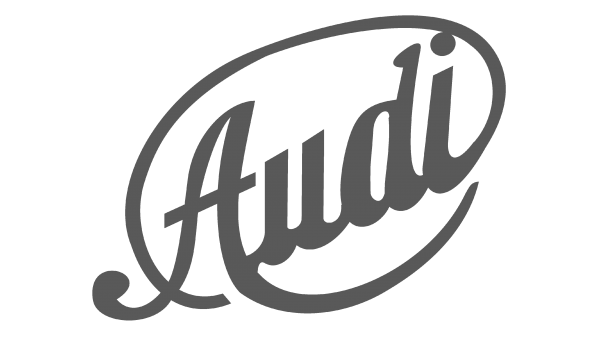
The original Audi logo was created in 1909 and only stayed with the company for a few months, during its preach period. It was a playful and elegant diagonally oriented inscription in light gray, with elongated and curved lines of some letters, and the tail of the “I” covering the whole inscription and crossing the left bar of the “A”.
1909
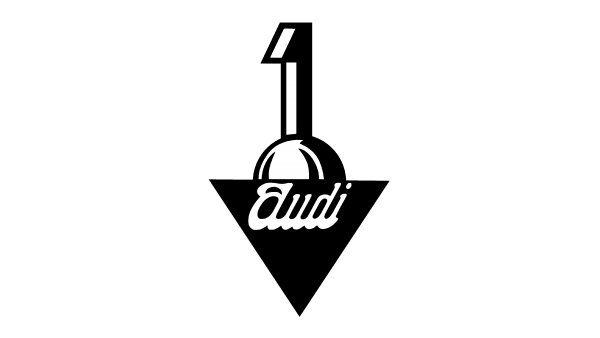
The first official logo was introduced in the same year, but also hast stayed for long. That was a solid black triangular pointing down with a smooth white “Audi” lettering in a custom narrowed cursive. Above the triangular the monochrome digit “1” with the spherical base was set.
1909 – 1932

The redesign of late 1909 switched the typeface of the Audi logotype on the badge, keeping all the other elements untouched. It was a custom sans-serif font with the elongated diagonal lines of the “A” and the “D”, directed up and to the left.
1932 – 1949
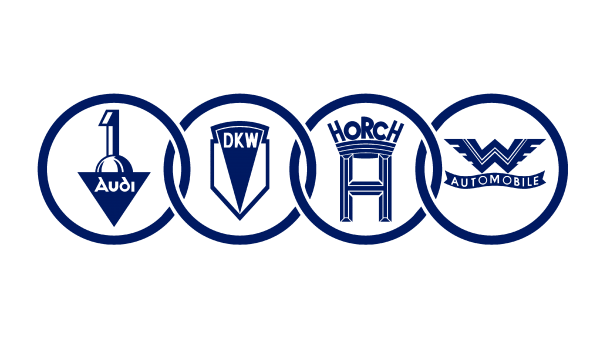
The first depiction of the iconic four-ring logo appeared in 1932, when the four companies, including Audi, edged into one group, Auto Union. Each automaker has its right, with the original emblem in the center, The first version of the logo was set in solid blue.
1949 – 1969

In 1949 the four-ring logo was simplified and redrawn in the black and white palette. The emblems of the companies were removed, and now it was just four intertwined circles, set in a straight horizontal line, and crossed by a solid black rectangle with the white uppercase “Auto Union” inscription on it.
1969

The badge from 1969 was composed of a horizontally oriented solid black rectangle, with the bold white Audi inscription, in the same font as on the logo from 1909, followed by the uppercase “NSU”, also in white sans-serif. The badge was only used for a few months.
1969 – 1995 (badge)
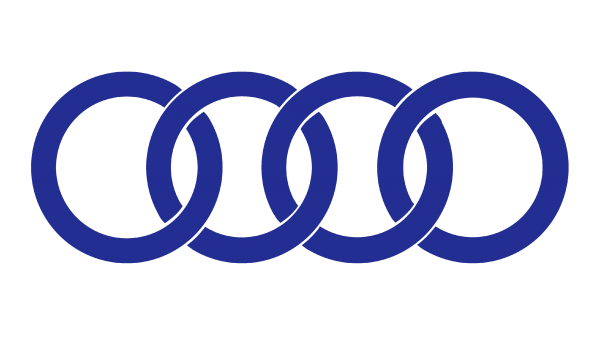
Later in 1969, the four-rings emblem was brought back as the main element of the Audi visual identity. The blue rings were drawn in bold lines, close to each other, and had not too much negative space inside. The overlapping areas were accented with white lines.
1969 – 1995
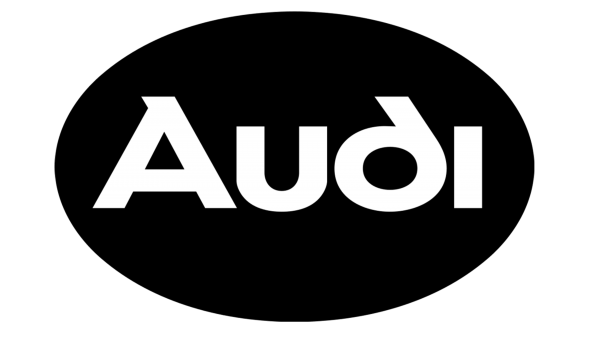
With the graphical emblem, the company has been using a plate with the logotype for the same years. It was a horizontally oriented oval in solid black, with the white Audi lettering in the original typeface with diagonal bars of two letters.
1978 – 1995
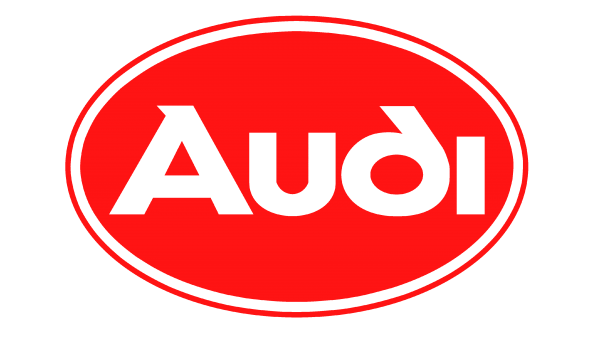
The redesign of 1978 created another plate for the German automaker, with the red background of the ob=val, and a thin double outline in white and red, which added some air and elegance to the logo.
1955 – 2009
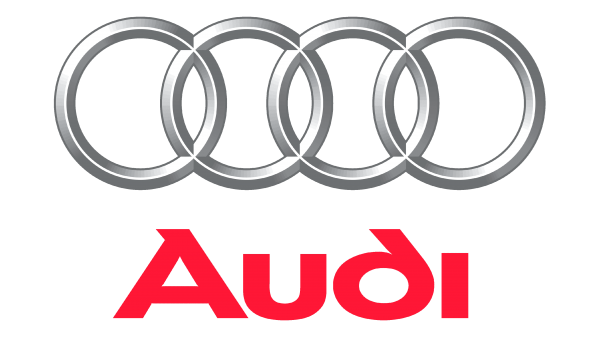
The two parts of the logo were replaced by one badge in 1995. It was a three-dimensional ring emblem in glossy silver, with the bold Audi logotype in bright red, written under it. Clean, powerful, and bright, this version of the logo was used by the company for more than a decade.
2009 – 2016
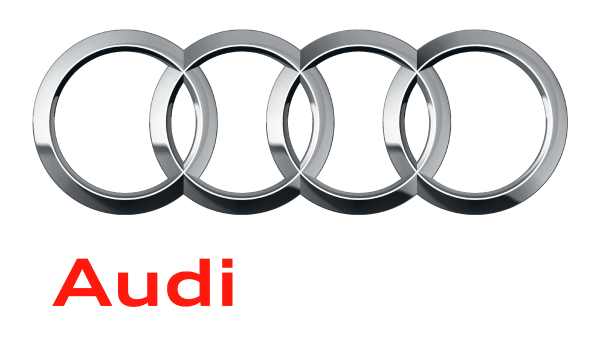
The redesign of 2009 made the rings thinner and darker, with more gloss added to the surface. As for the lettering, on the contrary, it became smaller and more modest, being written under the edge, on the left, in small red letters, with the iconic typeface changed to a more traditional sans-serif.
2016 – now

In 2016 the German automaker decides to switch to a minimalistic design of the bag and started using a flat black emblem as the only element of its visual identity. The new concept features four solid black rings in medium-thickness lines, with no additional elements.
Description
Four rings on the emblem of Audi mean a merger of four companies: DKW and Wanderer, Horch, and Audi in 1932. It was in the period of an economic recession. Such a coalescence of four automobile plants received the denomination of Auto Union. Put another way, both partners and competitors brought together.
After significant changes, a logo was necessary for a new company. At first, these were rings tied in a single chain and the name of each of four firms was typed in every ring. But such a logo looked overloaded and bulky, hence the decision to simplify it was taken. As a result only four rings remained. Afterwards, if at first they represented a chain, they began to look as separate rings applied on each other.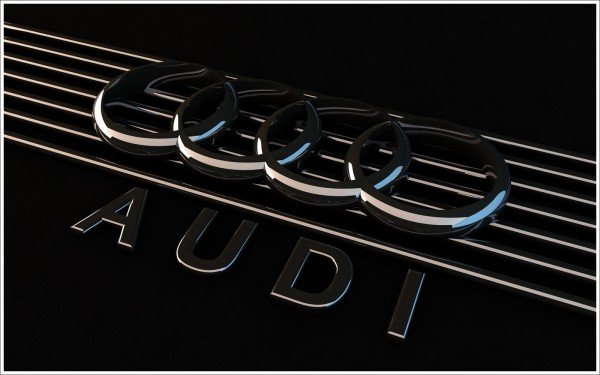
From the beginning, the Audi emblem was used only on racing cars, each company was manufacturing under its brand and adorning with its own emblems the cars made inside it. In 1964, Volkswagen bought Audi, but the former logo remained.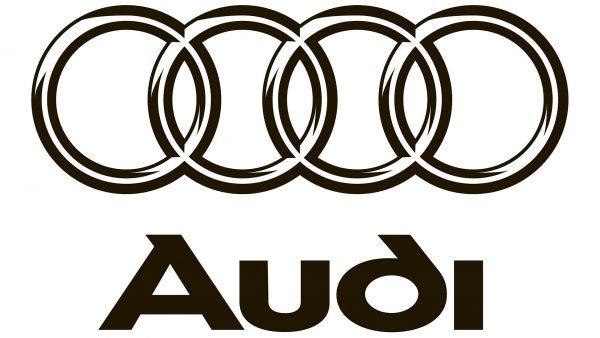
And the last facelift of the logo: In August 2009, its design was again slightly changed. The rings look wider; but they are similar to the old ones in thickness and area. The new variant of the logo turned more elegant and sculptured.
Symbol
The oldest car maker in Germany, Audi is proud of its long history. Yet, the brand’s CEOs also wanted its logo to emphasize the company’s approach to car design (which is changing with every new era), to reflect its strive for excellence and innovation. So, in spite of the fact, that generally Audi symbol remained the same, several minor changes were introduced over the last decade.
Emblem
The most recent innovation in the Audi logo was made before the company’s 100th anniversary. In addition to the changes mentioned above, there is one new element, the “Vorsprung durch Technik” inscription. Translated from German, these words mean “Progress through Technologies”. The new Audi emblem, with its more simplistic yet modern font, is meant to reinforce the company’s bond with its customers.
Color
The chrome tint of the Audi logo is glowing and brilliant, which gives the logo a modern and exquisite look.
Audi S Logo
Audi S is a range of high performance versions of several Audi models. The first one, the S2 Coupé, was launched in 1990. The modern models from this range are based on the respective A/TT/Q (the same approach as in case of the RS range). You can recognize these cars by a distinctive “S*” badge. In addition to this element, models from the S lineup have vertical lines on their front grills.
Audi A3 logo
A3 is a small family/compact car (hatchback) launched over 10 years ago. Initially it used the VW A platform. However, the 3rd generation switched to the VW MQB platform. Cars bearing the Audi A3 logo were the first VW Group vehicles to utilize the “PQ34” or “A4” platform resembling the modern VW Golf Mk4. At first, the A3 could be only purchased as a 3-door hatchback.
Audi A6 logo
The A6 is a line of executive cars that can be purchased in one of the two versions: sedan or wagon. The wagon configuration is sold under the Avant brand. The A6 range is currently in its fourth generation. Cars from this line use either front-wheel drive or Torsen-based four-wheel drive. The above picture shows the Audi A6 logo as it appears on the cars’ surface.
Audi TT logo
The range of compact two-door sports cars can be recognized by the shiny Audi TT(S) logo, an example of which you can see above. The lineup was launched in 1998 by Audi’s Hungarian subsidiary. The bodyshells for the first two generations of Audi TT were produced at the company’s Ingolstadt plant, but the more recent models are manufactured only at the production facilities located in Hungary.
Audi RS logo
The RS lineup includes performance versions of certain Audi models. Their performance is even higher than that of the S range. The RS series is produced by Quattro GmbH, which is AUDI AGs private subsidiary. The Audi RS logo consists of silver letters “RS”. The “R” has a red parallelogram on the background. Although colors may vary, in most cases red and silver are used, with black and white being an additional option.
Audi Q7 logo
The luxury crossover SUV launched in 2005 is known as Audi’s first SUV. The full-sized model shares its platform and chassis with such well-known vehicles as the Volkswagen Touareg and the Porsche Cayenne. It is the first Audi SUV to implement the FlexRay optical fiber technology. Simple yet modern, the Audi Q7 logo includes the name of the series in silver letterings without any background.
Audi R8 logo
The 2-seater sports car launched ten years ago utilizes the Quattro all-wheel drive system. Audi R8 is made by Quattro GmbH and uses the Lamborghini Gallardo as a platform. The Audi R8 logo features the name of the model (“R8”) with a parallelogram on the background. The lettering can be silvery, white, or black, while the parallelogram is usually red.
Audi S3 logo
The compact sedan combines all the advantages of the company’s high-performance and high-tech know-how. It features a rather accurate (although lightly weighted) steering and an all-wheel drive. One more characteristic feature that is valued by Audi S3 fans is its sport-tuned suspension. The silver letters of the Audi S3 logo have a red and (optionally) gray background.
Audi S4 logo
The Audi S4 logo looks almost identical to any other S* emblem: shiny lettering with a red parallelogram on the background. The designers’ decision is quite reasonable, taking into consideration that Audi S4 belongs to the S* range of high performance vehicles and shares their characteristic features. In fact, it is a high performance version of the A4 compact executive car. The first model to have the S4 badge (1991-1994) was based on Audi’s 100 saloon/sedan, but all the cars from the S4 range built after 1997 have been based on the Audi A4.



